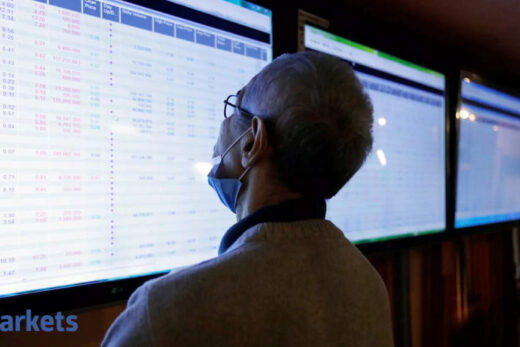Status quo on key rates means that FD investors will have to make do with the current low rates that their deposits have been earning for the past almost two years.
However, some smart moves can surely help you make the best of the current scenario. Here is a look at what FD investors should know and do to enhance their return on deposits.
Long term FD rates may rise late
Whenever the interest rate cycle makes a U-turn from the bottom, it is typically the short to medium term interest rates that are likely to rise first. As far as long term interest rates are concerned, it will take a little longer for these rates to go up.
Avoid locking FDs for long term
So, if you are planning to book an FD now or are looking to renew your existing FD, then it will be better to go for shorter term, say one year or lower, so that you deposit is not locked at a lower rate for long. Whenever the short to mid term rates rise, you can start increasing the tenure of the FDs accordingly.
Make an FD ladder to guard against lowest return
It could be a nightmare for an FD investor if the deposit is up for renewal around the time when the interest rate cycle is at its lowest point, like it has been for the past year. However, you can avoid this by making an FD ladder. To do so you need to divide one big FD into smaller FDs, and book these for different tenures. You can do this in a way that one of your FDs matures each year.
For instance, if you have a Rs 5 lakh FD, you can divide it into 5 parts and book 5 FDs of different tenures of 1 year, 2 years, 3 years, 4 years and 5 years. After one year, when the one-year tenure FD matures renew it for 5 years. After two years your FD with 2-year tenure will mature so you can renew it again for next 5 years. Now repeat this exercise each year and your ladder will be ready. This will ensure that not all of your deposits are locked at the lowest interest rate at the same time and your average return is on the higher side.
Go with floating rate options
When you do not wish to take any chances against the fluctuating interest rate cycle then floating rate FDs and floating rate bonds are good options if you want to lock in your funds for the long term.
Here is how floating rate FDs can help you
Many banks and non-banking financial companies have started offering floating rate fixed deposits. The interest rate on such a deposit is linked to a benchmark and the interest rate moves in tandem with the movement in the benchmark rate.
Indian Overseas Bank, for example, offers the floating rate FDs for 3-10 year tenures. It has kept the daily average of last six months of 5-year G-Sec rate and 10-year G-sec rate as benchmarks for 3-5 years and 5-10 years tenures, respectively. The 10-year G-sec yield on May 21, 2021, as per the data given by RBI, was 6.22%, which is much better than the FD rates of most large banks.
If you are not a senior citizen, then the best interest rate that you can get from a big bank will be around 5.25-5.5%. For instance, SBI is offering an interest rate of 5.40% on FD with tenure above 5 years to 10 years.
So the floating rate option appears to be giving better interest rate of 6.22% (if the 6 months average is also the same) even in the current scenario. Once the overall interest rate scenario changes and rates start moving up, then depositors will get the real benefit of a floating rate FD as the interest rate on these FDs will also go up.
Go for RBI floating rate bond for non-cumulative deposit
If you are a senior citizen and are looking for an option that gives you a regular income, then you should go for RBI Floating Rate Bonds. This bond is currently giving a return of 7.15% which way higher than bank FDs. It has a tenure of 7 years and pays interest semiannually. Though senior citizens have better options like SCSS and PMVVY, however, they cannot invest more than Rs 15 lakh each in these two options. So the RBI Floating Rate Bond is a good option for those senior citizens who have exhausted the investment limit in the SCSS and PMVVY.
Also Read:
Government launches 7.15% floating rate bonds: Here’s all you need to know
Also Read:
RBI floating rate bonds interest rate to remain 7.15% till June 30, 2021
However, all is not lost for FD investors as there are many signals which are indicating that the low interest regime may not continue for long. Here is a look at what FD investors can expect in the near future.
Rate hike on the horizon
Signs of an interest rate reversal were visible since the early part of 2021. On January 8, 2021, the
(SBI) announced a marginal increase in its bulk deposit interest rate above Rs 2 crore by 0.1%. It increased it for deposits with tenures ranging from 180 days to 2 years.
This was just an indication of the interest rate bottoming out and rise in the short-term rates. In April, private lender HDFC raised its deposit rates by 10-25 basis points. SBI and housing finance company, HDFC, are often seen as trend setters as far as interest rates on loans and deposits are concerned.
Though the rates were not increased in RBI monetary policy meeting in April this year the expectation for a hike in June was building up. With 10-year G-sec yield touching 6.22% on May 21, 2021, wholesale inflation reaching double digit figure of 10.49% in April, growth concerns ebbing with record GST collection of Rs 1.41 lakh crore in April, a hike in interest rate was appearing more certain than it was any time in the preceding one year. However, the second wave of Covid-19 with country wide lockdown knocked the economy out of track again which has deferred the interest rate hike further.
However, given the fact that many macro indicators are making a case for interest hike stronger, it looks like it will only be a matter of time when the second wave subsides, after which interest rates start slowly start moving northwards.
Also read:
RBI keeps repo rate unchanged: What home loan, auto loan, personal loan borrowers should do now



